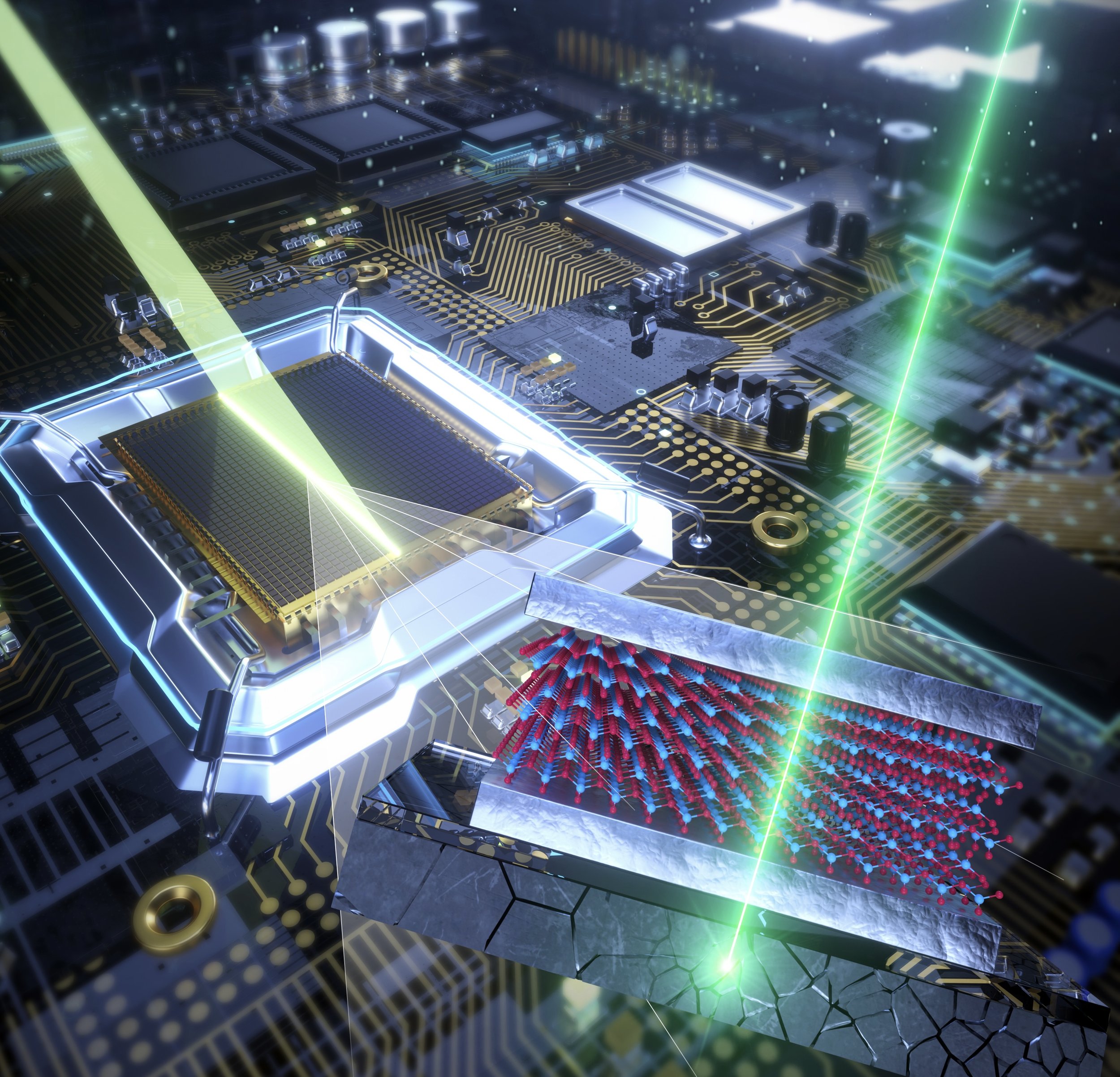Goals
Our overarching goal is to propose and realize advanced integration platforms that effectively harness diverse semiconductor technologies, thereby contributing to the resolution of pressing global energy challenges. Through the seamless integration of novel materials, device architectures, and circuits we aim to foster enduring energy solutions and drive sustainable technological progress.
Research Topics
1
Ferroelectric Materials and Devices
We explore CMOS-compatible ferroelectric materials and devices to enhance conventional memory technologies such as NAND flash and DRAM. This research further drives in-memory computing and neuromorphic architectures, paving the way for next-generation, high-performance computational paradigms.
-
Memory and Logic
We investigate hafnia-based ferroelectric memory solutions—including FeNAND, FeRAM, etc to surpass the performance limits of conventional charge-trap flash and DRAM. For logic, by adopting and negative-capacitance FeFETs—enabling aggressive EOT scaling and low-voltage operation.
-
Neuromorphic Computing
We extend to a range of ferroelectric device structures—such as ferroelectric tunnel junctions (FTJs), FeFETs, and ferroelectric memcapacitors—to realize hardware platforms optimized for neuromorphic computing.
-
Energy Storage and Harvesting
Beyond advancing semiconductor devices, we leverage the unique properties of ferroelectric materials to tackle the inherent trade-off between charging rate and capacity in conventional energy storage/harvesting systems. We explore innovative material integrations and device architectures for both portable electronics and large-scale applications.
2
Sensor Technologies
We develop chemical and physical sensor platforms that seamlessly integrate with existing Si CMOS processes. By enabling efficient artificial sensing systems for the IoT era, we aim to establish robust and scalable sensor solutions that advance intelligent signal processing and real-time environmental interfacing.
-
Chemical and Physical Sensors
We exploit oxide and two-dimensional semiconductors to develop CMOS-compatible sensor platforms that detect chemical and physical stimuli via redox interactions and other solid-state phenomena. These sensors aim for high sensitivity and selectivity, supporting a broad spectrum of IoT-driven applications.
-
Integrated Sensor Platforms
In addition to individual sensor devices, we investigate system-level integrated sensor arrays with driving circuits and data-processing modules, ultimately advancing real-time environmental monitoring and adaptive sensor networks.
We employ low-frequency noise (LFN) measurements to investigate reliability—an essential criterion for commercializing novel semiconductor materials and devices. By examining LFN characteristics, we elucidate fundamental operational mechanisms and degradation behaviors, thereby enhancing material and device understanding to facilitate their successful transition into future applications.
3
Low-frequency Noise Analysis
-
Si CMOS Devices
We investigate low-frequency noise (LFN) characterization of Si-based devices—ranging from conventional bulk transistors to, SOI transistors, and ferroelectric transistors. By elucidating the underlying noise mechanisms, these findings guide targeted design optimizations for stable, high-performance semiconductor solutions.
-
Oxide, Organic, and Two-Dimensional Semiconductors
We extend our LFN analysis to emerging materials, including oxide, organic and two-dimensional semiconductors. Based on LFN analysis, we not only elucidate the distinctive properties of these next-generation materials and devices, but also highlight the reliability challenges that must be overcome for successful commercializationss.
-
Stochastic Computing
Moving beyond reliability analysis, we leverage LFN as a novel resource for stochastic computing—a cutting-edge paradigm that harnesses controlled randomness in device operations. By systematically refining noise characteristics at the device level, we enable innovative architectures for energy-efficient computation and advanced artificial intelligence.











